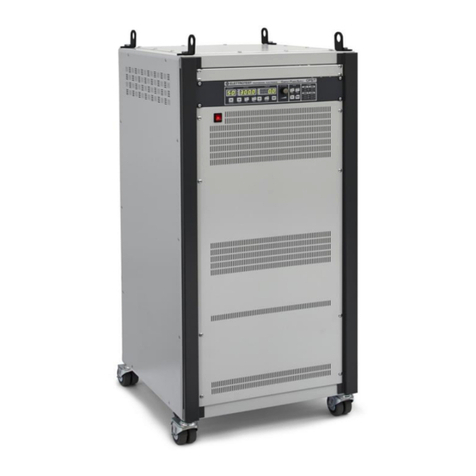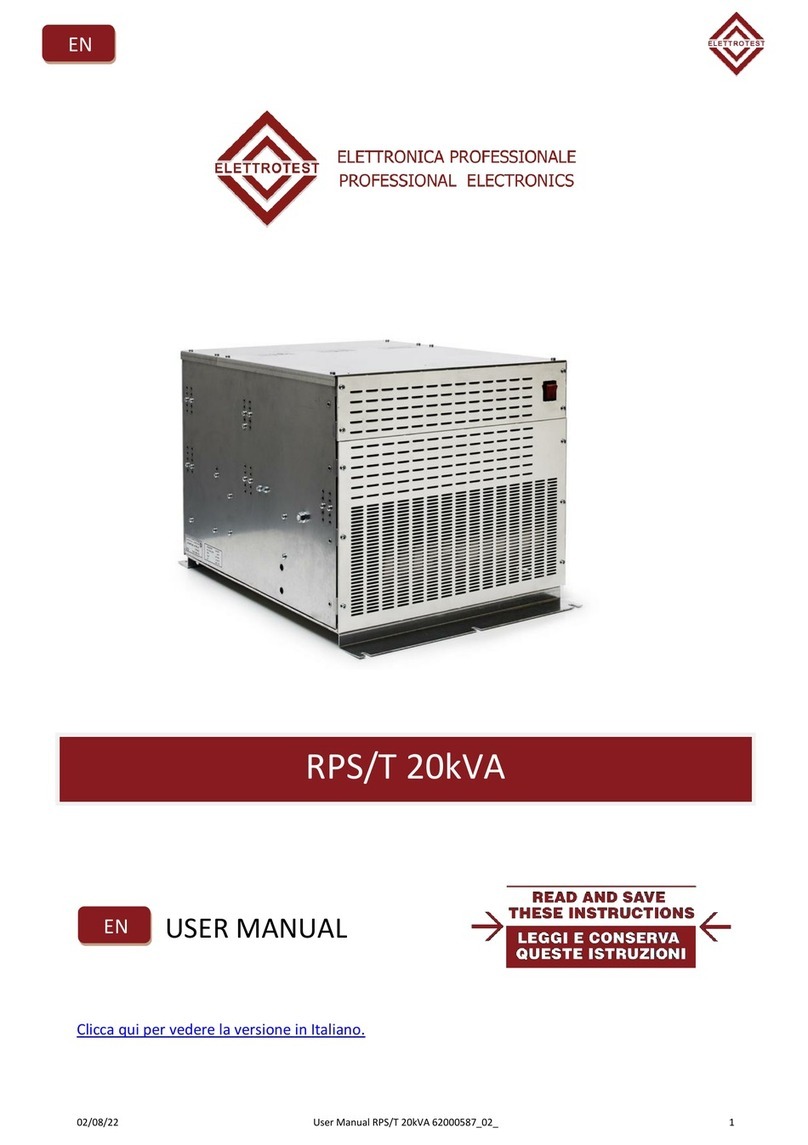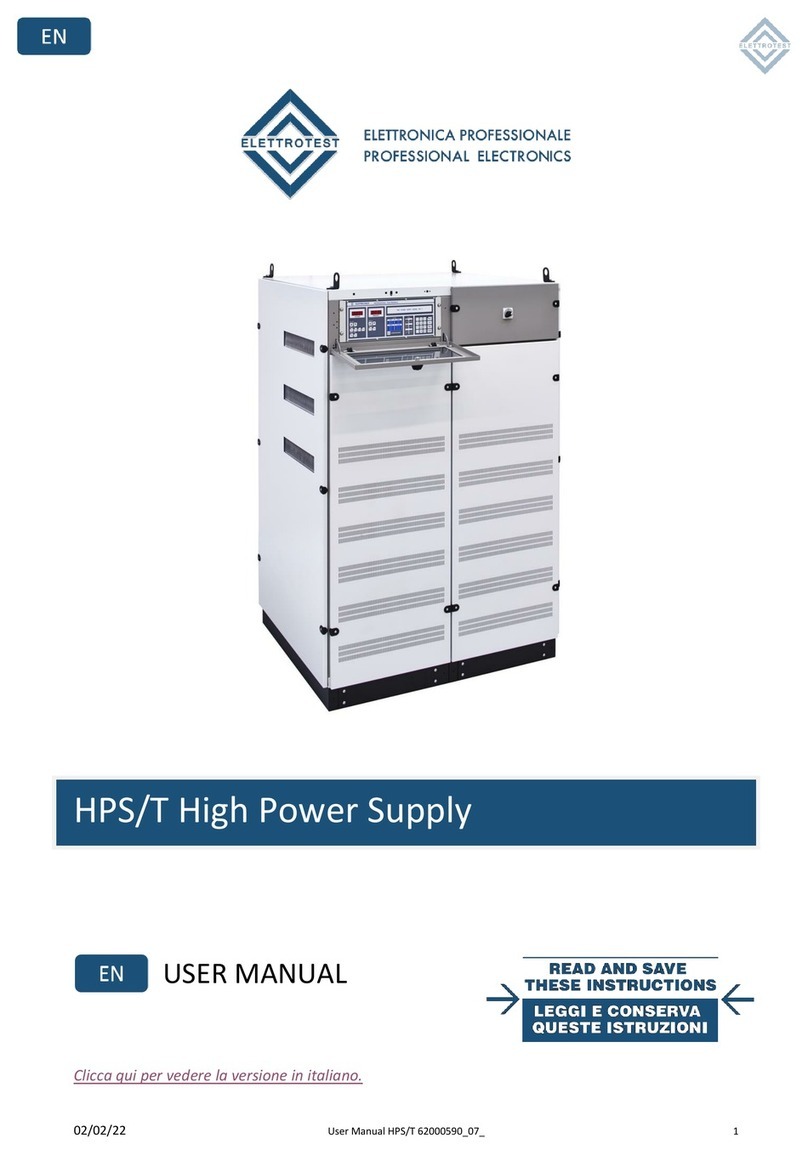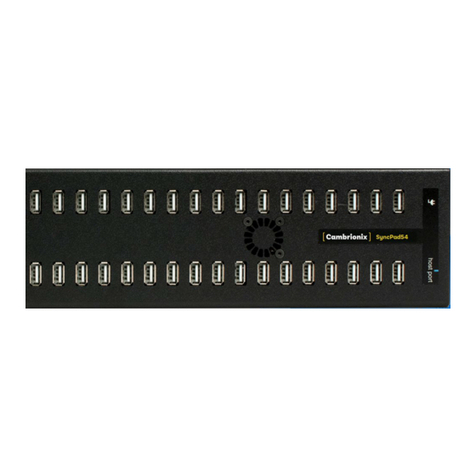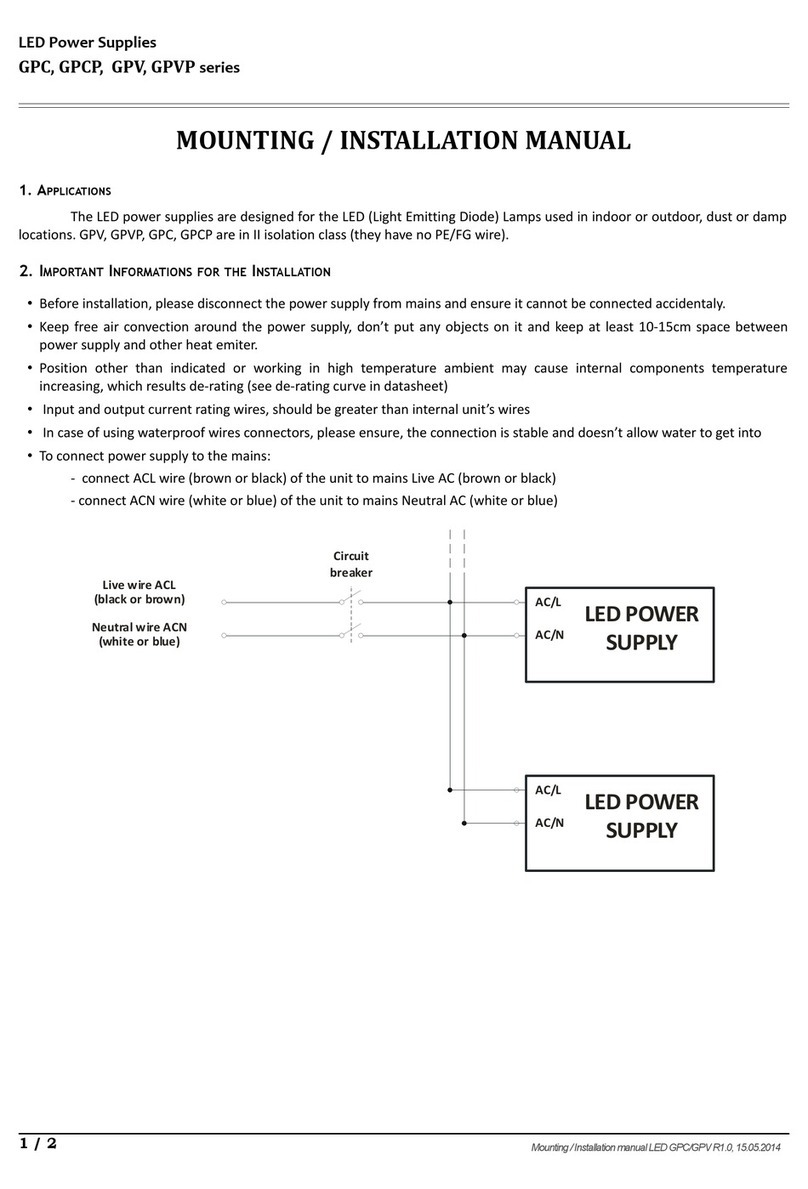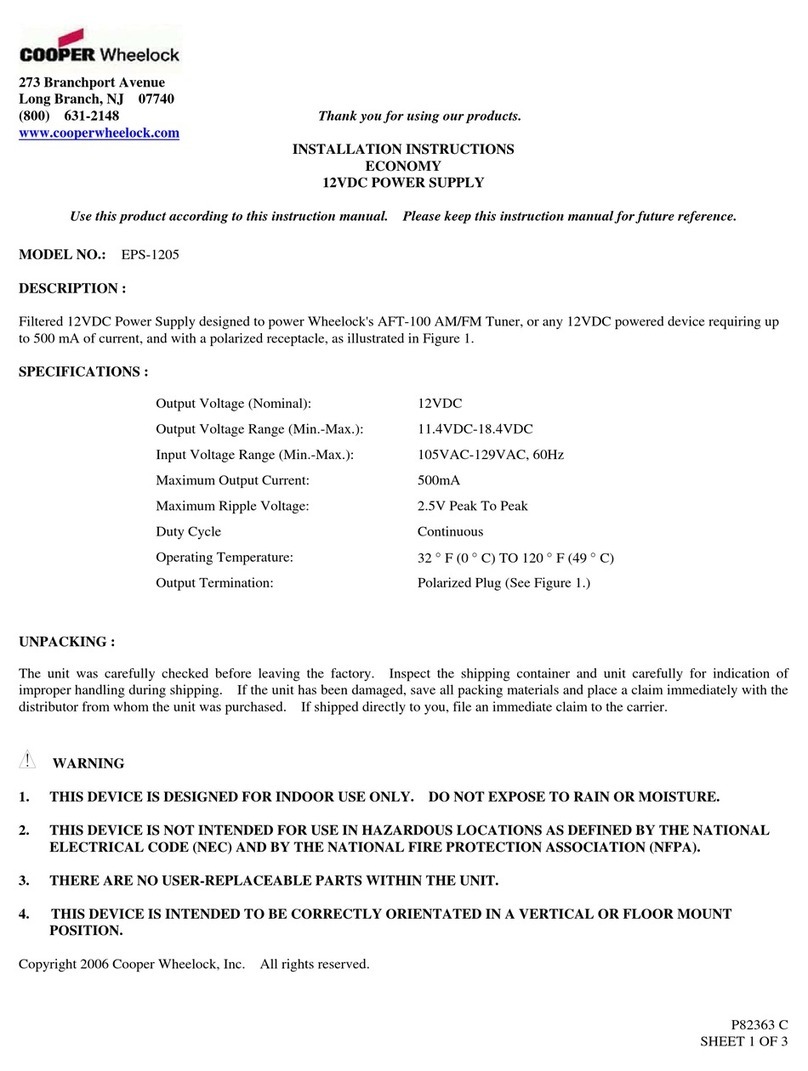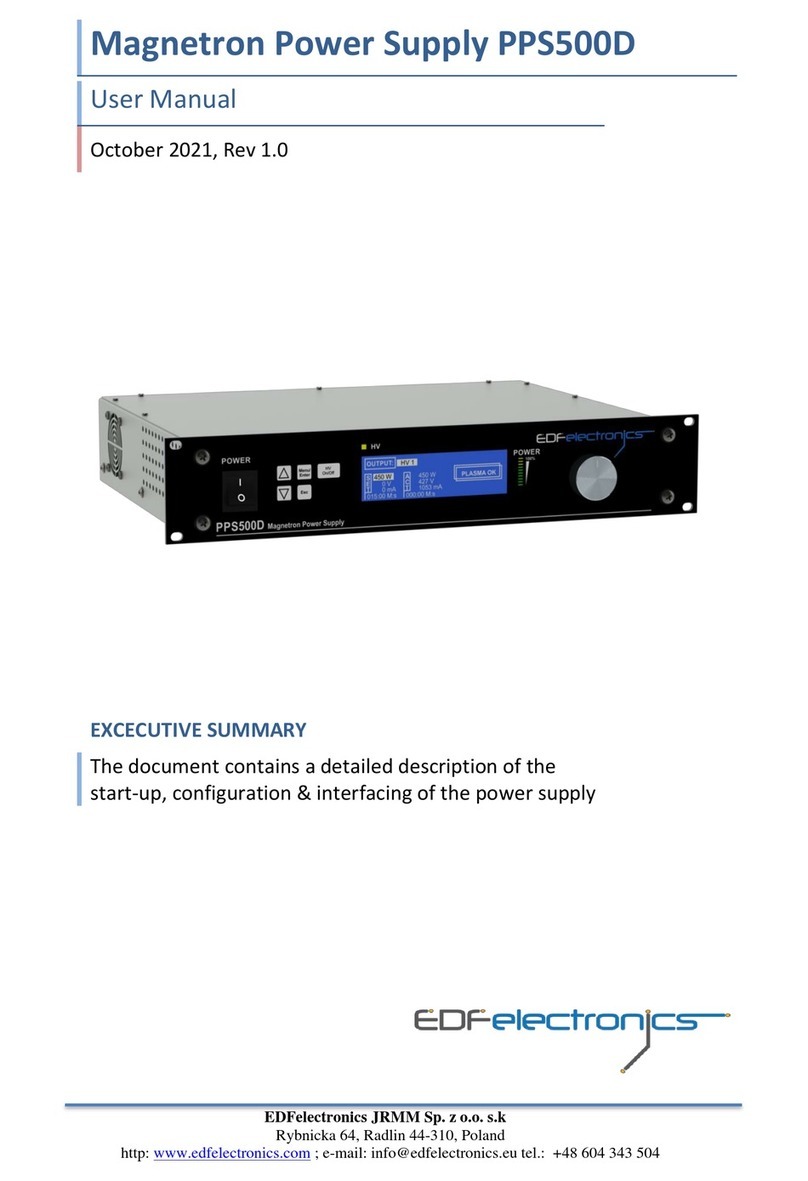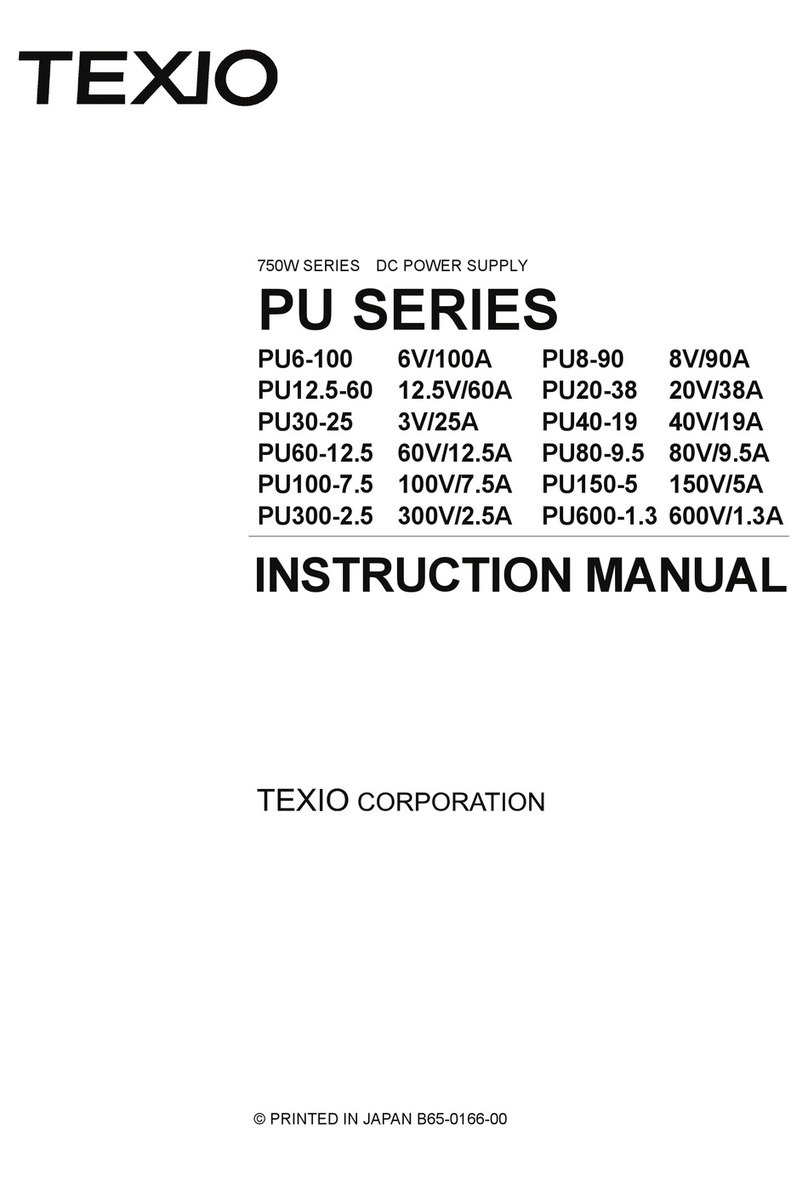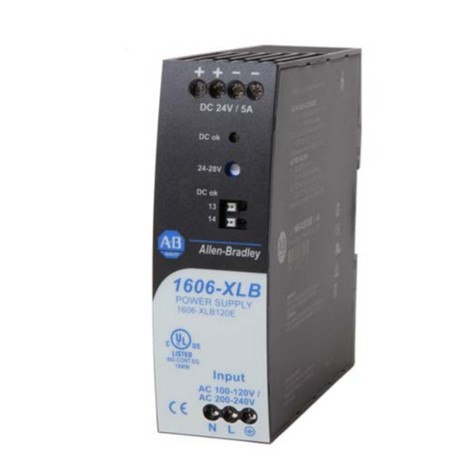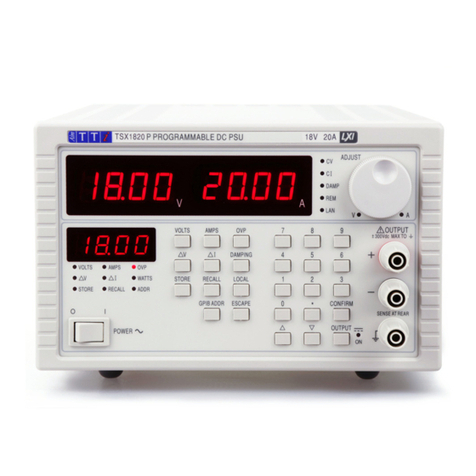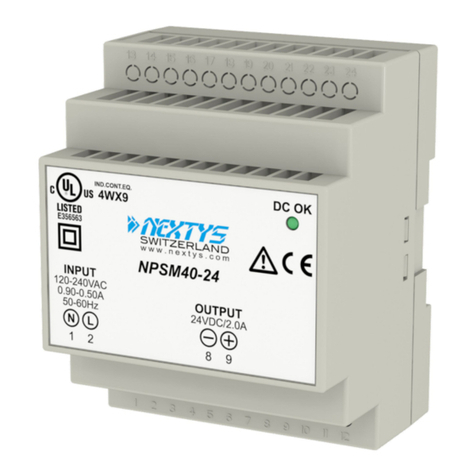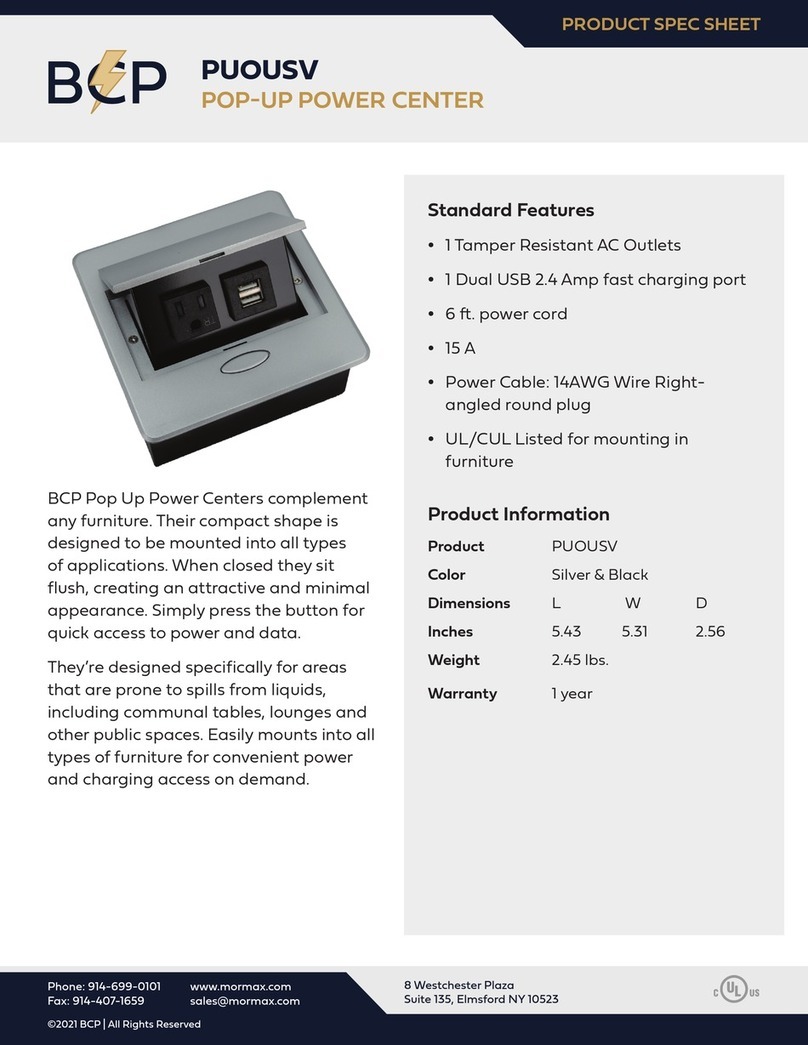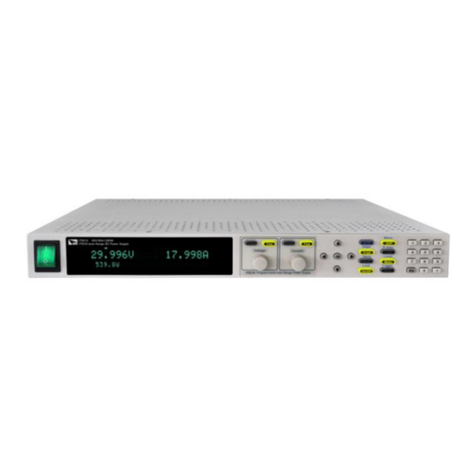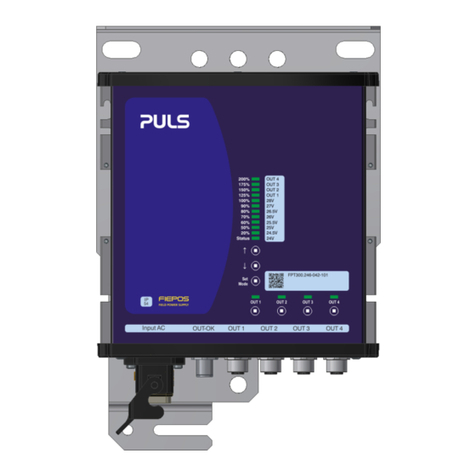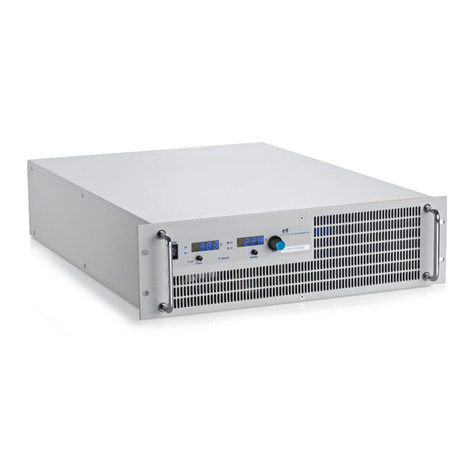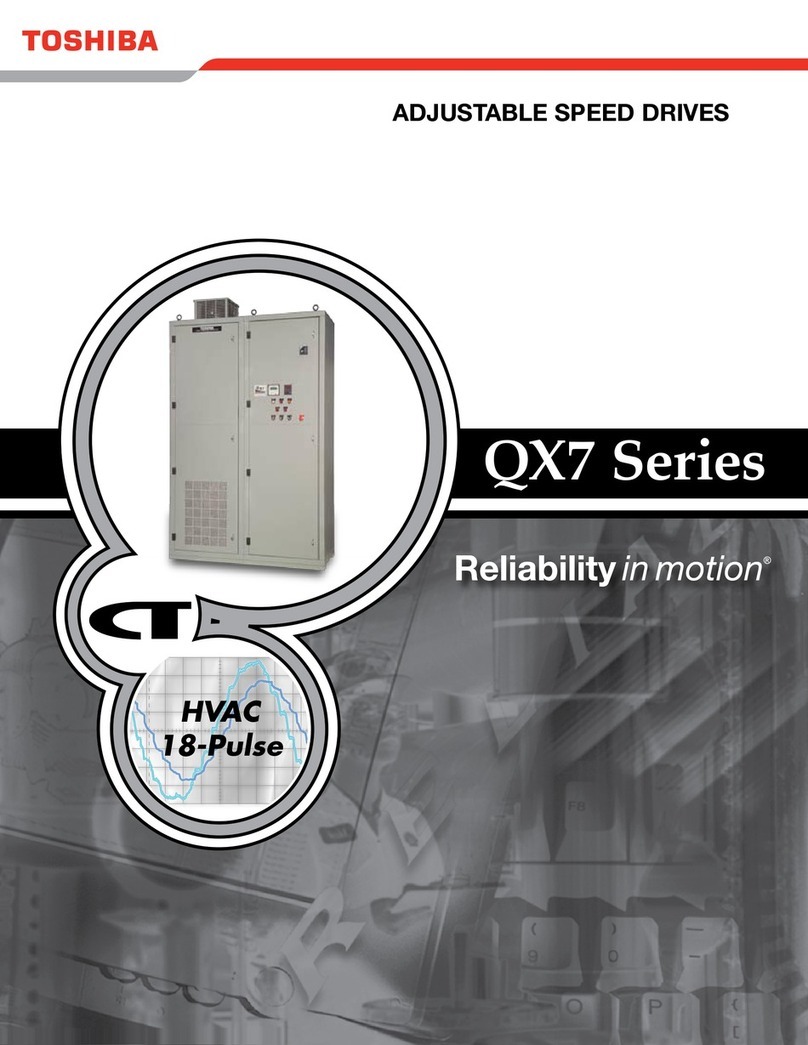Elettrotest TPS/M/D User manual

1
USER MANUAL TPS/M 62000595 REV 03_ –01/06/2021
TPS/M/D
USER MANUAL

2
USER MANUAL TPS/M 62000595 REV 03_ –01/06/2021
Elettrotest Spa
P,zza R.Riello 20/B
45021 Badia Polesine (RO)
Italy
+39 042553567
www.elettrotestspa.it
After sale support
Thank you for purchasing the TPS generator.
TPS/M is an high performance variable voltage generator (amplitude and frequency) in order to
simulate and electrical line for test for different application (laboratory , test line, production line)
Responsability:
Elettrotest disclaims any responsibility for damage to people or things
caused by an improper use of its products .
Mandatory
-Verify voltage, power and frequency compatibility between TPS range and electrical
specification of equipment under test (EUT).
-Electrical components of the system must be suitable for the rated voltage and current of
TPS model (paragraph 1.2)
-The electrical components, which by construction cannot support external influences (of
the generator in all its range), can only be used on condition that adequate additional
protection has been provided with automatic disconnection protection.
Notes:
This manual lists precautions and information about operating procedure of device.
The content of this manual is subject to change without prior notice because of continuing
improvements on the instrument’s
Should you have any questions or find any error please contact us by email.
Copying or reproducing all or any part of the contents of this document is strictly
prohibited, without Elettrotest permission
Version:
This manual is written for TPS firmware version 10124 and higher

3
USER MANUAL TPS/M 62000595 REV 03_ –01/06/2021
SAFETY WARNINGS
The manufacturer urges users to read the user manual for our products before installation.
The installation must be carried out by qualified technical staff. The non-observance of the
warnings in this manual can cause electric shocks, even fatal ones.
Please find some general safety warnings below.
•This equipment must be connected to the mains supply using the appropriate safety
devices.
•TPS must be connected to safety ground through the correct connections. The non-
observance or the degradation of this earth connection can lead to electric shocks, even
fatal ones. As regards the correct connection modes, please refer to the information
contained in paragraph 4.
•Disconnect TPS from the mains before any work on the equipment and on the connected
power loads.
•Before touching the load or the output connector make sure that the power supply on the
device has been disconnected for at least 5 minutes. This is the time necessary in order for
the capacitors inside the device to discharge. The non-observance of this discharge time
can lead to electric shocks, even fatal ones.
•Avoid heavy shocks to the equipment (especially during transport) or exposure to extreme
weather conditions.
•Any damage to the product due to transportation, incorrect installation or improper use is
not covered by the guarantee supplied by the manufacturer.
•Do not use the equipment in explosive environments or in the presence of dust, acids or
corrosive and/or inflammable gases.
•Tampering with or dismantling any component in the equipment will void the warranty
automatically.
•Do not operate or store under conditions where condensing may occur or where
conductive debris may enter in the case.
•Keep the ventilation holes on the front and rear free from obstruction.
•Do not make dielectric strengths test on the input or output of the equipment. Contact
Elettrotest if you need to do specific test
ELECTRIC RISK
There are dangerous voltages inside TPS and over the output connector.
The non-observance of the warnings suggest in this manual can lead to electric
shocks, even fatal ones.
OVERHEATING RISK
In the case of a ventilation system failure, the metal parts of the inverter may reach
high temperatures (in some cases higher than 70°C).

4
USER MANUAL TPS/M 62000595 REV 03_ –01/06/2021
DISPOSAL
INFORMATION FOR USERS ON THE CORRECT HANDLING OF WASTE
ELECTRICAL AND ELECTRONIC EQUIPMENT (WEEE)
In reference to European Union directive 2012/19/EU issued on 24 July 2012 and the related
national legislation, please note that:
•WEEE cannot be disposed of as municipal waste and such waste must be collected and
disposed of separately;
•the public or private waste collection systems defined by local legislation must be used. In
addition, the equipment can be returned to the manufacturer at the end of its working life
when buying new equipment;
•the equipment may contain hazardous substances: the improper use or incorrect disposal
of such may have negative effects on human health and on the environment;
•the symbol (crossed-out wheeled bin) shown on the product or on the packaging and on
the instruction sheet indicates that the equipment must be disposed of separately;
•in the event of illegal disposal of electrical and electronic waste, the penalties are specified
by local waste disposal legislation.

5
USER MANUAL TPS/M 62000595 REV 03_ –01/06/2021
INDEX
1. INTRODUCTION............................................................................................................................7
1.1. MAIN FEATURES ....................................................................................................................7
1.1.1. Output voltage................................................................................................................7
1.1.2. Output frequency ...........................................................................................................7
1.1.3. User interface .................................................................................................................8
1.1.4. General performances....................................................................................................8
1.1.5. General specifications.....................................................................................................8
1.2. MODELS.................................................................................................................................9
1.3. TECHNICAL SPECIFICATIONS ...............................................................................................10
1.3.1. INRUSH CURRENT VS TIME...........................................................................................10
1.4. MECHANICAL DRAWINGS....................................................................................................11
1.4.1. TPS/M/D 1K5 ................................................................................................................11
1.4.2. TPS/M/D 3K...................................................................................................................12
1.4.3. TPS/M/D 6KVA..............................................................................................................13
1.4.4. TPS/M/D 9KVA..............................................................................................................14
1.5. NOTES FOR USERS ...............................................................................................................15
1.5.1. FRONT PANEL................................................................................................................15
1.5.2. COMUNICATIONS REAR PANEL.....................................................................................15
2. INSTALLATION............................................................................................................................16
2.1. GENERAL NOTES..................................................................................................................16
2.1.1. INSPECTION...................................................................................................................16
2.1.2. POWER CABLING...........................................................................................................16
2.1.2.1.1. TPS/M/D 1K5 ........................................................................................................16
2.1.2.1.2. TPS/M/D 3K ..........................................................................................................17
2.1.2.1.3. TPS/M/D 6K ..........................................................................................................18
2.1.2.1.4. TPS/M/D 9K ..........................................................................................................19
2.2. PROTECTION DEVICE ...........................................................................................................20
2.2.1. GENERAL DIAGRAM......................................................................................................20
2.2.2. RCD PROTECTION..........................................................................................................20
2.2.3. MAGNETO-THERMAL PROTECTION..............................................................................21
2.2.4. LINE FUSES ....................................................................................................................21
2.2.5. INTERNAL FUSES TPS/M/D 1K5 ....................................................................................21
2.2.6. INTERNAL FUSES TPS/M/D 3K ......................................................................................21
2.2.7. INTERNAL FUSES TPS/M/D 6K......................................................................................21
2.2.8. INTERNAL FUSES TPS/M/D 9K......................................................................................22
2.2.9. ACCESSORY TPS/M/D 1K5.............................................................................................22
2.2.10. ACCESSORY TPS/M/D 3K...............................................................................................22
2.2.11. ACCESSORY TPS/M/D 6K...............................................................................................23
2.2.12. ACCESSORY TPS/M/D 9K...............................................................................................23
2.3. WIRING DIAGRAM...............................................................................................................24
2.3.1. 2 WIRE CONFIGURATION..............................................................................................24
2.3.2. 4 WIRE CONFIGURATION..............................................................................................25
3. REMOTE CONTROL.....................................................................................................................26
3.1. Control software..................................................................................................................26
3.2. RS232 serial cable................................................................................................................26
3.3. RS485 pinout .......................................................................................................................26

6
USER MANUAL TPS/M 62000595 REV 03_ –01/06/2021
4. LOCAL OPERATION.....................................................................................................................27
4.1. POWER ON ..........................................................................................................................27
4.2. HOME PAGE.........................................................................................................................28
4.3. VOLTAGE SETPOINT.............................................................................................................29
4.4. FREQUENCY SETPOINT ........................................................................................................29
4.5. SETTINGS MENU..................................................................................................................29
4.5.1. OPERATION SETTINGS ..................................................................................................31
4.5.1.1.1. SENSE MODE.........................................................................................................32
4.5.1.1.2. OUTPUT MODE .....................................................................................................32
4.5.1.1.3. AC/DC....................................................................................................................32
4.5.2. REMOTE SETTINGS........................................................................................................32
4.5.2.1.1. ETHERNET settings................................................................................................33
4.5.2.1.2. RS 232 settings......................................................................................................33
4.5.2.1.3. RS485 settings.......................................................................................................33
4.5.3. USER SETTINGS .............................................................................................................34
4.5.4. Output current limit......................................................................................................35
4.5.4.1.1. Peak limit ..............................................................................................................35
4.6. USB STORE...........................................................................................................................37
4.7. OPERATION MENU ..............................................................................................................37
4.7.1. ALARMS.........................................................................................................................38
4.7.1.1. REMOTE SETTING..................................................................................................38
4.7.1.2. CURRENT LIMITATION ..........................................................................................38
4.7.1.3. VOLTAGE ALLARM ................................................................................................39
4.7.1.4. INVERTER COMMUNICATION...............................................................................39
4.7.1.5. BUS OVERVOLTAGE & UNDERVOLTAGE...............................................................39
4.7.1.6. OVERTEMPERATURE.............................................................................................39
4.7.1.7. INVERTER ALARM .................................................................................................39
5. Table of the data saved on the usb............................................................................................40
6. GUARANTEE ...............................................................................................................................41

7
USER MANUAL TPS/M 62000595 REV 03_ –01/06/2021
1. INTRODUCTION
TPS is a power source that supplies sinusoidal stable voltage. Its output voltage is adjustable in
frequency, amplitude and phase.
It also has the ability to generate very precise and stabilized DC voltage.
1.1. MAIN FEATURES
1.1.1. Output voltage
The output voltage is guaranteed perfectly DC or sinusoidal, with a distortion of less than 0.3%
regardless of the load. The value of output voltage is kept perfectly stable within 0.1% with linear
load and a full load.
The load that TPS is able to drive can vary from a pure capacity to a pure inductance.
The output voltage is adjustable with continuity from zero to full scale.
TPS can in fact provide the nominal power at various full scales and this allows the TPS to adapt
himself to the disparate needs of the user, without having heavy limitations on the output current.
Furthermore TPS is capable to keep the voltage stable also with time variable loads, as for
example the pulsating loads. In fact TPS recovers the distortion of the waveform within 0.3 % with
linear load and the amplitude of the voltage within 0.1% in less than half period.
Furthermore, TPS can bear a short circuit for an indefinite time without suffering any
consequence.
1.1.2. Output frequency
In AC configuration TPS allows the regulation of the output frequency from 10 to 80Hz at
maximum voltage.
This output frequency can be regulated with continuity within the above mentioned range of
frequencies and it has a stability of 0.01% with respect to the set frequency.

8
USER MANUAL TPS/M 62000595 REV 03_ –01/06/2021
1.1.3. User interface
TPS is intended to have an user friendly interface. It is also featured the possibility of an host
computer control, thus allowing to perform tests automatically. TPS allows various usage
selections: wires drop compensation, working frequency. Furthermore, TPS gives the user clear
information on the status of the output. Set voltage and set frequency are monitored and the
output voltage is read with a precision of 0.3%.
The user is also warned in case of over current obtainable by the TPS, or in case of high loss in the
wires, that should not exceed 5% of the set voltage.
We underline again that TPS automatically limits the maximum allowed current, avoiding damages
to the equipment; the only consequence is that, in this case, it is not guaranteed the precision of
the output waveform neither the accuracy of the output voltage.
The user can set the output voltage through the LCD touchscreen, the same possibility is valid for
the setting of the frequency and the phase.
The above possibility makes the TPS very flexible in those applications where it is requested a
continuous variation of the two regulated magnitudes, around a given values.
1.1.4. General performances
All the following features are valid within the range of the normal operating limits; they are not
valid during the limitation of the output current
(1)With linear load.
1.1.5. General specifications
The voltage is referred phase to neutral, with neutral connected to the earth.
PARAMETER
VALUE
Output Frequency Range
DC or 10Hz - 80Hz(1)
Phase Resolution
1°
Frequency Resolution
0.02Hz
Frequency Precision and Time Stability
100ppm
Output Voltage (2)
300Vac - 300Vdc
Output Voltage Resolution
0.025% f.s. (12 bit f.s.)
Operating Temperature
0°C - 35°C
(1) Frequency can be increased up to 320 Hz at lower performance than the nominal.
(2) The RPS works at constant output current so if you decrease the voltage you decrease also the
maximum power.
PARAMETER
VALUE
Distortion of the output waveform (1)
<0.3%
Stability of the output voltage
<0.1%
Accuracy of the output voltage
<0.5%
Recovery-time of the output waveform
<200us
Maximum compensated drop on wires
5% f.s.
Recovery time of RMS
<200ms

9
USER MANUAL TPS/M 62000595 REV 03_ –01/06/2021
1.2. MODELS
The following tables show all the characteristics of both types:
TPS/M/D 1K5
TPS/M/D 3K
TPS/M/D 6K
TPS/M/D 9K
DIMENSION / WEIGHT
Height
191 mm
191 mm
281 mm
281 mm
Widht (1)
471 mm
471 mm
471 mm
471 mm
Depth
513 mm
513 mm
513 mm
513 mm
Weight (1)
25 Kg
29 Kg
39 Kg
44 Kg
GENERAL
Operating Temperature
0°C - 35°C
User Interface
7” Touch Screen Display
Communication Interface
RS232, RS485 , ETHERNET
Communication Protocol
Elettrotest, SCPI, Modbus RTU , Modbus TCP/IP
Protection
Overtemperature, Overvoltage, Undervoltage, Inverter
Current Limitation
Programmable and selectable from PEAK & AVG
Efficiency
Better than 88% at full power
INPUT
Input Voltage(2)
230Vac± 10% 1PH
400Vac± 10%
3PH +N
Input Frequency
47-63Hz
Input Current
Continuous
12A
25A
16A line 27A
neutral
24A line 41A
neutral
Max
24A
50A
32A line 54A
neutral
48A line 82A
neutral
3-PHASE ISOLATED OUTPUT
Range
150V
300
150V
300
150V
300
150V
300
Output Voltage AC (Line to Neutral)
0 - 150
0 - 300
0 - 150
0 - 300
0 - 150
0 - 300
0 - 150
0 - 300
Output Voltage DC (Line to Neutral)
-
0 - 300
-
0 - 300
-
0 - 300
-
0 - 300
Output DC Offset
<50 mVdc
Output Noise
<1000 mVrms
Maximum Output Power AC
1500 VA
1500 VA
3000 VA
3000 VA
6000 VA
6000 VA
9000 VA
9000 VA
Maximum Output Power DC
-
1500W
-
3000W
-
6000 W
-
9000 W
Maximum Output Current Continuous
9.33A
4.67A
18.7A
9.3A
38.1A
19.0A
60.2A
30.1A
Maximum Output Current Inrush
(for 3 secs)
18.7A
9.3A
37.3A
18.7A
76.2A
38.1A
123.6A
61.8A
Output Frequency
DC & 10 - 80(3)Hz
Output Voltage Stability
<0.1%
Output Voltage Accuracy
(respect the full range voltage)
<0.5%
THD(2)
<0.3%
Recovery-Time of Output Waveform
<200 μs
Maximum Compensated Drop
(respect setting voltage)
5%
Recovery-Time of Drop on Wires
<200 ms
(1) current derating required for voltage > 300Vdc, see the attached figure
(2) at nominal voltage with linear load
(3)Frequency can be increased up to 320 Hz at lower performance than the nominal.

10
USER MANUAL TPS/M 62000595 REV 03_ –01/06/2021
1.3. TECHNICAL SPECIFICATIONS
1.3.1. INRUSH CURRENT VS TIME
0.00
0.50
1.00
1.50
2.00
2.50
3.00
3.50
0.0 10.0 20.0 30.0 40.0 50.0 60.0
Time (sec)
I/Io
Inrush
Count.

11
USER MANUAL TPS/M 62000595 REV 03_ –01/06/2021
1.4. MECHANICAL DRAWINGS
1.4.1. TPS/M/D 1K5
PROG
3
1 2
OUTPUT
INTERFACE
OUT 2OUT 1SET
DISPLAY VOLT
OUT 3
300 150
RANGE VOLT
LINEINT
FREQ. REF
INVERTER
OVER TEMP
V
V
MAX OUT 1
MAX OUT 2
VOLTAGE
LIMIT OUT 2
LIMIT OUT 1
UNDERVOLTAGE
OVERVOLTAGE
CURRENT
HARDWARE RESET
RESET
VMAX OUT 3LIMIT OUT 3 97 8
456
.0CLEAR
FREQ.
VOLT
ENTER
SENSE
ELETTROTEST
ELETTROTEST
VOLTAGE
SET VOLT
PROFESSIONAL ELECTRONICS
FREQ. SET
FREQUENCY
SYSTEM
ALARMS
SUPPLY
MODE
471

12
USER MANUAL TPS/M 62000595 REV 03_ –01/06/2021
1.4.2. TPS/M/D 3K
PROG
3
1 2
OUTPUT
INTERFACE
OUT 2OUT 1SET
DISPLAY VOLT
OUT 3
300 150
RANGE VOLT
LINEINT
FREQ. REF
INVERTER
OVER TEMP
V
V
MAX OUT 1
MAX OUT 2
VOLTAGE
LIMIT OUT 2
LIMIT OUT 1
UNDERVOLTAGE
OVERVOLTAGE
CURRENT
HARDWARE RESET
RESET
VMAX OUT 3LIMIT OUT 3 97 8
456
.0CLEAR
FREQ.
VOLT
ENTER
SENSE
ELETTROTEST
ELETTROTEST
VOLTAGE
SET VOLT
PROFESSIONAL ELECTRONICS
FREQ. SET
FREQUENCY
SYSTEM
ALARMS
SUPPLY
MODE
471

13
USER MANUAL TPS/M 62000595 REV 03_ –01/06/2021
1.4.3. TPS/M/D 6KVA
281
513

14
USER MANUAL TPS/M 62000595 REV 03_ –01/06/2021
1.4.4. TPS/M/D 9KVA
281
513

15
USER MANUAL TPS/M 62000595 REV 03_ –01/06/2021
1.5. NOTES FOR USERS
1.5.1. FRONT PANEL
1.5.2. COMUNICATIONS REAR PANEL
You can select the interface from the touch panel
Item
Name
Description
1
Touch Screen
Input programming data or options by using touch screen interface
2
USB Type A Interface
USB Type A for storage key
3
USB Type B Interface
USB type B for uprgrade firmware
4
Power Switch
Press this button to switch on/off power part
5
Knob
Rotate to change the selected data
Item
Name
Description
1
Ethernet Interface
This interface is used for remote control via Ethernet cable
2
RS232 Interface
This interface is used for remote control via RS232 cable
3
RS485 Interface
This interface is used for remote control via RS485 cable
1
ETHERNET RS232 RS485
2
3

16
USER MANUAL TPS/M 62000595 REV 03_ –01/06/2021
2. INSTALLATION
2.1. GENERAL NOTES
2.1.1. INSPECTION
After unpacking the product, please inspect any damage that may have occurred during the
shipment. Save all packing materials in case the product has to be returned one day. If any
damage is found, please file a claim with the carrier immediately. Do not return the product to the
factory without obtaining the prior Return Merchandise Authorization (RMA) acceptance from
ELETTROTEST S.P.A.
2.1.2. POWER CABLING
2.1.2.1.1. TPS/M/D 1K5
•Use the cable supplied with the machine.
•Pay attention to the polarity of the cable.
•Make sure that the phases are connected with the indicate sequence
othewise you canhave an alarm.
•Connect cable load with appropriate dimension and put the ferrite
core on the load cable with 3 turns close to TPS/M/D
•Optionally: Connect the sense wires
•Keep free under and lateral area for ventilation
9
3
2
7
6
4
10
1. 4 wire sense voltage
2. Power output
3. GND
4. Safety Switch
5. Input supply
6. Input fuse
7. Input switch
8. Comunication port
9. Fan
10. Ventilation grill
8
1
4
5

17
USER MANUAL TPS/M 62000595 REV 03_ –01/06/2021
2.1.2.1.2. TPS/M/D 3K
•Open the back terminal working on the two lateral hooks with a screwdriver.
•Open the cable glands.
•Join one supplying cable 2P+G of suitable section 3*2.5mmq.
•Make sure that the phases are connected with the indicate sequence.
•Connect cable load with appropriate dimension.
•Reclose the cable glands.
•Reclose the terminal cover securing it on the two lateral hooks.
•Connect cable load with appropriate dimension and put the ferrite
core on the load cable with 3 turns close to TPS/M/D
•Optionally: Connect the sense wires
•Keep free under and lateral area for ventilation
9
3
2
7
6
4
10
1. 4 wire sense voltage
2. Power output
3. GND
4. Safety Switch
5. Input supply
6. Input fuse
7. Input switch
8. Comunication port
9. Fan
10. Ventilation grill
8
1
4
5
4

18
USER MANUAL TPS/M 62000595 REV 03_ –01/06/2021
2.1.2.1.3. TPS/M/D 6K
•Open the back terminal working on the two lateral hooks with a screwdriver.
•Open the cable glands.
•Join one supplying cable 3P+N+G according to the indications.
•Make sure that the phases are join with the indicate sequence
•1 –phase L1
•2 –phase L2
•3 –phase L3
•4 - free
•5 - N
•6 - Eart
•On the back terminal are marked in a suitable way neutral and ground.
•Use a cable of suitable section (max 5*6mm2)
•Make sure that the phases are joined with the indicate sequence.
•Reclose the cable glands.
•Connect cable load with appropriate dimension and put the ferrite
core on the load cable with 3 turns close to TPS/M/D
•Reclose the terminal cover joining it on the two lateral hook
9
4
2
3
5
6
7
8
9
10
1
1. 4 wire sense voltage
2. Power output
3. GND
4. Safety Switch
5. Input supply
6. Input fuse
7. Input switch
8. Comunication port
9. Fan
10. Ventilation grill

19
USER MANUAL TPS/M 62000595 REV 03_ –01/06/2021
2.1.2.1.4. TPS/M/D 9K
•Open the back terminal working on the two lateral hooks with a screwdriver.
•Open the cable glands.
•Join one supplying cable 3P+N+G according to the indications.
•Make sure that the phases are join with the indicate sequence
•1 –phase L1
•2 –phase L2
•3 –phase L3
•4 - N
•5 - N
•6 - Eart
•On the back terminal are marked in a suitable way neutral and ground.
•Use a cable of suitable section (max 5*6mm2)
•Make sure that the phases are joined with the indicate sequence.
•Reclose the cable glands.
•Connect cable load with appropriate dimension and put the ferrite
core on the load cable with 3 turns close to TPS/M/D
•Reclose the terminal cover joining it on the two lateral hook
9
4
8
7
6
7
5
9
2
3
1
10
11. 4 wire sense
voltage
12. Power output
13. GND
14. Safety Switch
15. Input supply
16. Input fuse
17. Input switch
18. Comunication port
19. Fan
20. Ventilation grill

20
USER MANUAL TPS/M 62000595 REV 03_ –01/06/2021
2.2. PROTECTION DEVICE
2.2.1. GENERAL DIAGRAM
Mandatory
Safety protection (Magneto-thermal and differential) are mandatory according to
the nominal TPS characteristic.
An additional adequate protection must be add when electrical components
(cable, Equipment under test –EUT) cannot support TPS performance.
2.2.2. RCD PROTECTION
A residual-current device (RCD), or residual-current circuit breaker (RCCB), is a device that
instantly breaks an electric circuit to prevent serious harm from an ongoing electric shock.
It's recommended to use B type RCD with a earth leakage current of 30 mA according to the
nominal input characteristic (see section 1.2). The machine can absorb more than 100mA at high
frequency, be secure the RCD has the filter for high frequency.
This manual suits for next models
3
Table of contents
Other Elettrotest Power Supply manuals
